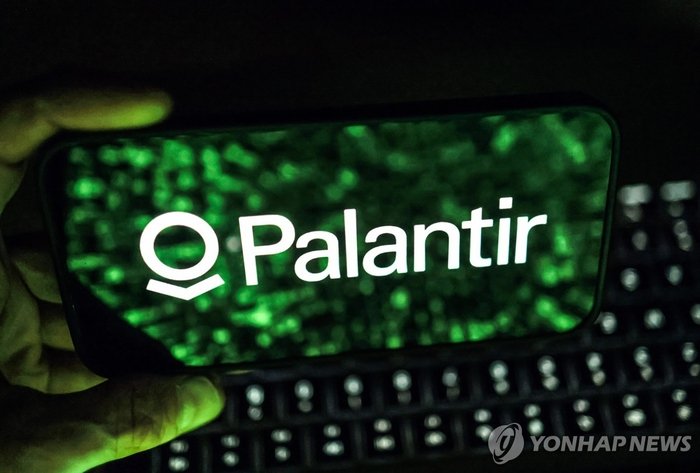Dublin, Sept. 12, 2025 (GLOBE NEWSWIRE) — The “Artificial Intelligence (AI) in Construction – Global Strategic Business Report” report has been added to ResearchAndMarkets.com’s offering.
The global market for Artificial Intelligence (AI) in Construction was estimated at US$2.4 Billion in 2024 and is projected to reach US$12.1 Billion by 2030, growing at a CAGR of 31.0% from 2024 to 2030. This comprehensive report provides an in-depth analysis of market trends, drivers, and forecasts, helping you make informed business decisions.
Artificial intelligence is revolutionizing the construction industry, introducing advanced automation, predictive analytics, and precision management that are fundamentally changing how projects are planned, executed, and maintained. AI is employed in construction operations to streamline project management, automate repetitive tasks, and enhance on-site safety. One primary application is in project planning and scheduling, where AI algorithms analyze historical project data to create realistic timelines and anticipate potential delays, enabling better resource allocation and cost control.
What Factors Are Driving the Growth of AI in the Construction Market?
The growth in the AI in construction market is driven by several factors, including advancements in digital technology, the demand for efficiency and sustainability, and evolving industry regulations. One of the primary drivers is the rapid development of AI technology, which has lowered costs and made these tools more accessible to construction firms of all sizes. The increasing adoption of cloud computing and edge processing allows construction sites to leverage real-time data analysis, supporting advanced AI applications on-site without requiring extensive infrastructure investments.
Another key factor is the industry’s need to address labor shortages and rising labor costs; AI-driven robotics and automation help fill this gap by performing tasks that are labor-intensive, allowing firms to complete projects faster and with fewer resources. The growing focus on sustainability in construction, driven by regulatory requirements and consumer demand for environmentally friendly practices, is also propelling AI adoption. AI-powered design tools, energy-efficient material recommendations, and predictive maintenance of building systems align with these sustainability goals.
Additionally, heightened health and safety regulations are pushing companies to adopt AI for proactive safety management, as AI-based monitoring can improve compliance with evolving standards. Together, these technological, economic, and regulatory factors are driving AI integration in construction, making it an indispensable component in modernizing an industry that faces unique challenges in efficiency, safety, and sustainability.
What Role Does AI Play in Enhancing Safety on Construction Sites?
AI is significantly improving safety on construction sites, an area where risks are high and rapid response is critical. Through the use of computer vision and real-time data analytics, AI systems can monitor on-site activities, identify hazards, and enforce safety protocols automatically. For instance, cameras powered by AI can detect when workers are not wearing required safety gear, like helmets or harnesses, and send real-time alerts to supervisors to take corrective actions.
Similarly, AI algorithms analyze movement patterns on-site to identify potentially unsafe behavior, like workers entering restricted zones or heavy machinery operating too close to foot traffic, reducing the likelihood of accidents. Predictive analytics are also employed to evaluate safety risks based on historical data, such as accident records and environmental factors, helping managers take preventative measures to address high-risk areas before incidents occur.
Additionally, AI-powered wearables monitor workers’ health indicators, such as heart rate and fatigue levels, and issue alerts when thresholds are crossed, reducing the risk of incidents related to overexertion. By enhancing hazard detection, real-time monitoring, and proactive risk management, AI is playing a crucial role in transforming construction site safety, potentially reducing the industry’s historically high accident rates and fostering a safer work environment.
How Is AI Influencing Design and Project Efficiency in Construction?
AI is enhancing design processes and project efficiency in construction by enabling data-driven decision-making and providing innovative tools that support more accurate and sustainable designs. Architects and engineers are increasingly turning to AI-powered generative design, which explores multiple design permutations based on specific constraints like materials, structural load, and environmental impact. This process produces optimized designs that align with aesthetic and functional requirements while maximizing material efficiency and sustainability.
Furthermore, AI is instrumental in assessing environmental impact, simulating building performance under various conditions, and recommending materials that reduce carbon footprint, aligning with the construction industry`s growing emphasis on sustainable practices. In project execution, AI-driven robotics and autonomous machinery are deployed for repetitive tasks such as bricklaying, concrete pouring, and earth-moving, allowing skilled workers to focus on more complex activities. This improves project efficiency by accelerating construction timelines and reducing labor costs, which is particularly valuable given the labor shortages facing the industry.
Additionally, AI in Building Information Modeling (BIM) allows for better coordination between architects, engineers, and contractors by integrating real-time data updates and clash detection, preventing costly rework and improving project collaboration. Together, these AI applications are driving efficiency in the design and construction process, ultimately supporting more sustainable, high-quality building outcomes.
Report Features:
- Comprehensive Market Data: Independent analysis of annual sales and market forecasts in US$ Million from 2024 to 2030.
- In-Depth Regional Analysis: Detailed insights into key markets, including the U.S., China, Japan, Canada, Europe, Asia-Pacific, Latin America, Middle East, and Africa.
- Company Profiles: Coverage of players such as Alice Technologies, Askporter, Assignar, Aurora Computer Services, Autodesk and more.
- Complimentary Updates: Receive free report updates for one year to keep you informed of the latest market developments.
Key Insights:
- Market Growth: Understand the significant growth trajectory of the Solutions segment, which is expected to reach US$8.0 Billion by 2030 with a CAGR of a 30.5%. The Services segment is also set to grow at 32.1% CAGR over the analysis period.
- Regional Analysis: Gain insights into the U.S. market, valued at $713.7 Million in 2024, and China, forecasted to grow at an impressive 29.8% CAGR to reach $1.8 Billion by 2030. Discover growth trends in other key regions, including Japan, Canada, Germany, and the Asia-Pacific.
Scope of the Study
- Segments: Component (Solutions, Services); Stage (Pre-Construction, Construction-Stage, Post-Construction); Application (Project Management, Asset Management, Risk Management, Other Applications); End-Use (Heavy Construction, Residential, Public Infrastructure, Other End-Uses)
- Geographic Regions/Countries: World; United States; Canada; Japan; China; Europe (France; Germany; Italy; United Kingdom; and Rest of Europe); Asia-Pacific; Rest of World.
Key Attributes:
| Report Attribute | Details |
| No. of Pages | 198 |
| Forecast Period | 2024 – 2030 |
| Estimated Market Value (USD) in 2024 | $2.4 Billion |
| Forecasted Market Value (USD) by 2030 | $12.1 Billion |
| Compound Annual Growth Rate | 31.0% |
| Regions Covered | Global |
Key Topics Covered:
MARKET OVERVIEW
- Influencer Market Insights
- Tariff Impact on Global Supply Chain Patterns
- Global Economic Update
- Artificial Intelligence (AI) in Construction – Global Key Competitors Percentage Market Share in 2025 (E)
- Competitive Market Presence – Strong/Active/Niche/Trivial for Players Worldwide in 2025 (E)
MARKET TRENDS & DRIVERS
- Rising Demand for Automation and Efficiency Drives Growth of AI in Construction
- Increasing Focus on Safety and Risk Management Spurs Adoption of AI-Powered Solutions
- Here`s How Predictive Analytics in AI Reduces Project Delays and Enhances Construction Planning
- Growing Use of Drones and AI for Site Monitoring Expands Market for AI in Construction
- Technological Advancements in Machine Learning Enhance Accuracy in Construction Quality Control
- Rising Labor Shortages Drive Demand for AI and Robotics in Construction Automation
- Here`s How BIM (Building Information Modeling) Integration Expands Scope of AI in Construction Projects
- Growing Adoption of Smart and Sustainable Building Practices Supports AI in Green Construction
- Focus on Reducing Waste and Enhancing Resource Management Propels AI-Driven Efficiency Solutions
- Increasing Investment in Digital Twin Technology Boosts AI Applications for Real-Time Construction Insights
- Here`s How AI-Powered Safety Monitoring Systems Enhance Worker Safety in High-Risk Environments
- Growing Application of Computer Vision in Site Surveillance and Quality Inspection Fuels Market Growth
- Advances in Predictive Maintenance for Construction Equipment Support Long-Term AI Integration
- Rising Demand for Cost Optimization and Budget Forecasting Expands Use of AI in Construction Management
- Focus on Data-Driven Decision Making Sustains Long-Term Growth in AI-Powered Construction Analytics
FOCUS ON SELECT PLAYERS:Some of the 251 companies featured in this Artificial Intelligence (AI) in Construction market report
- Alice Technologies
- Askporter
- Assignar
- Aurora Computer Services
- Autodesk
- Bentley Systems
- Beyond Limits
- Building System Planning
- Coins Global
- DarKTrace
- Deepomatic
- Doxel
- eSUB
- IBM
- Jaroop
- Lili.Ai
- Microsoft
- Oracle
- Plangrid
- Predii
- Renoworks Software
- SAP
- SmarTVid.Io
For more information about this report visit https://www.researchandmarkets.com/r/i6kfd4
About ResearchAndMarkets.com
ResearchAndMarkets.com is the world’s leading source for international market research reports and market data. We provide you with the latest data on international and regional markets, key industries, the top companies, new products and the latest trends.















































